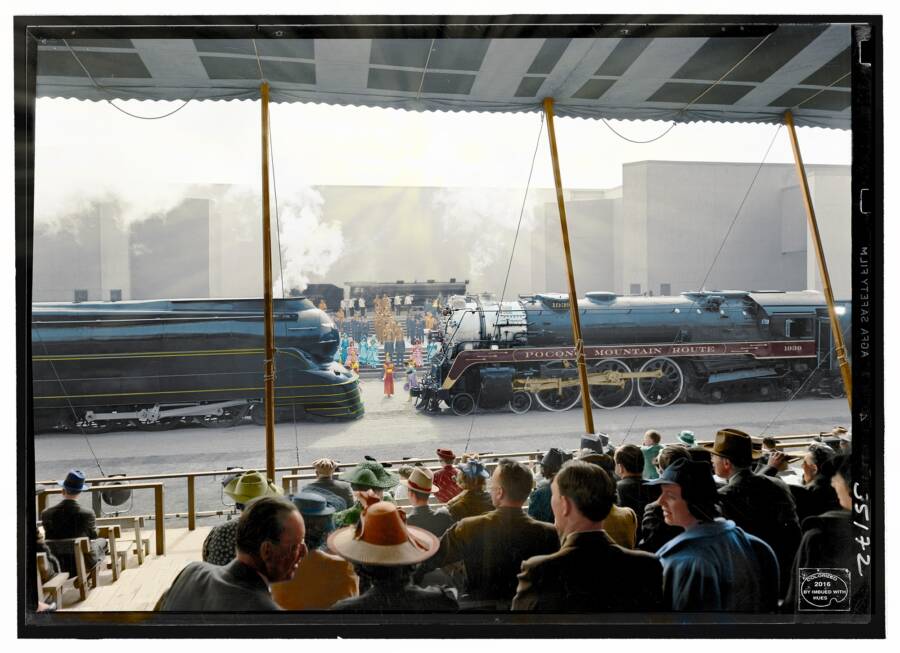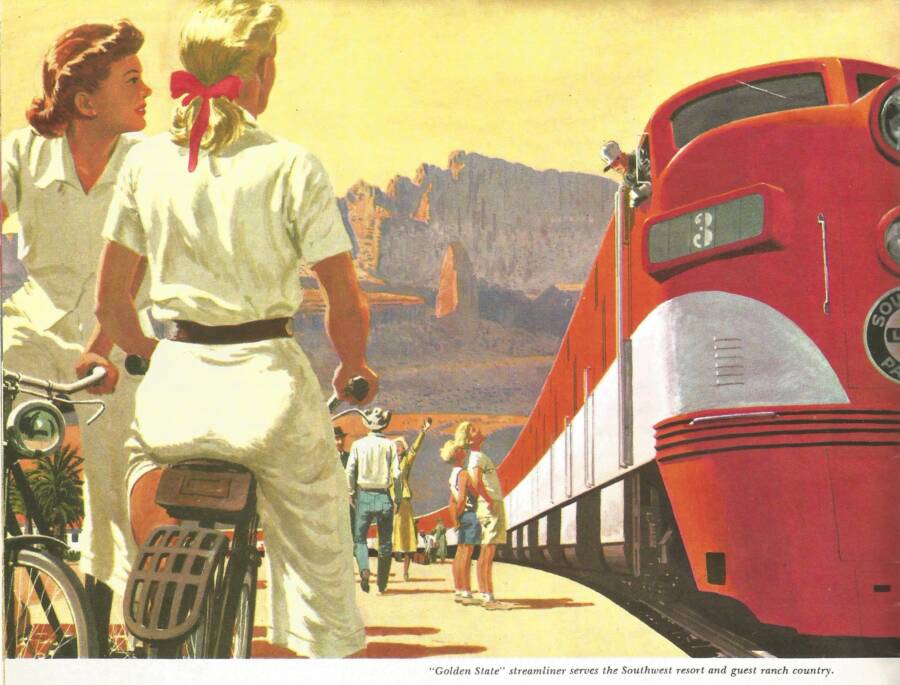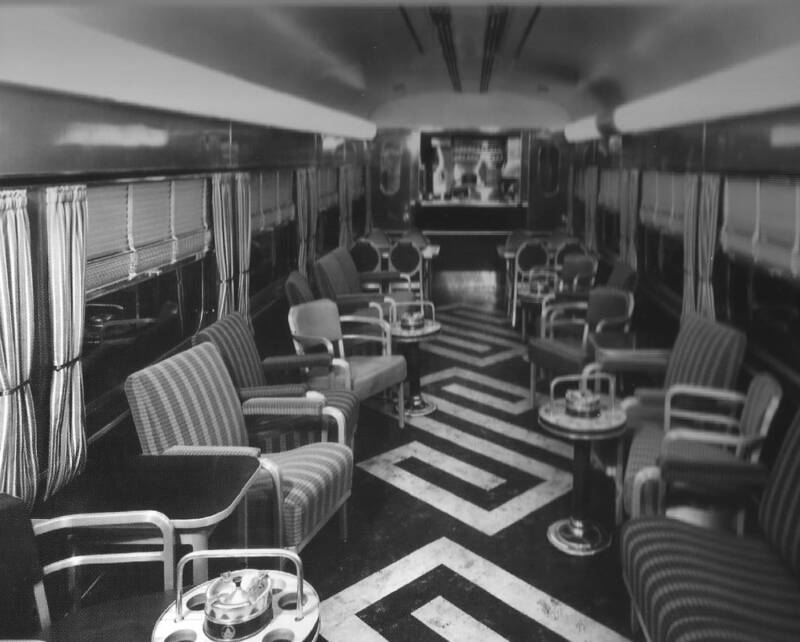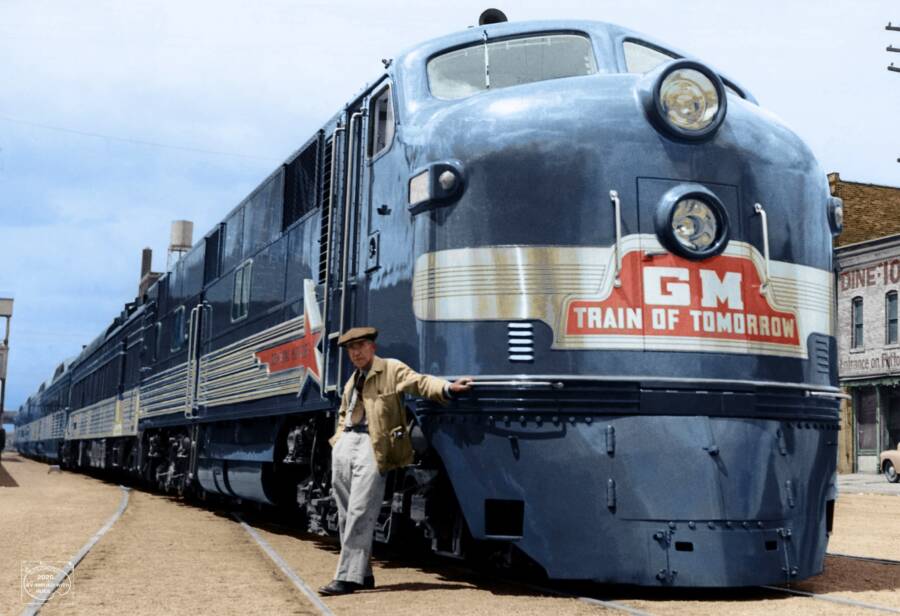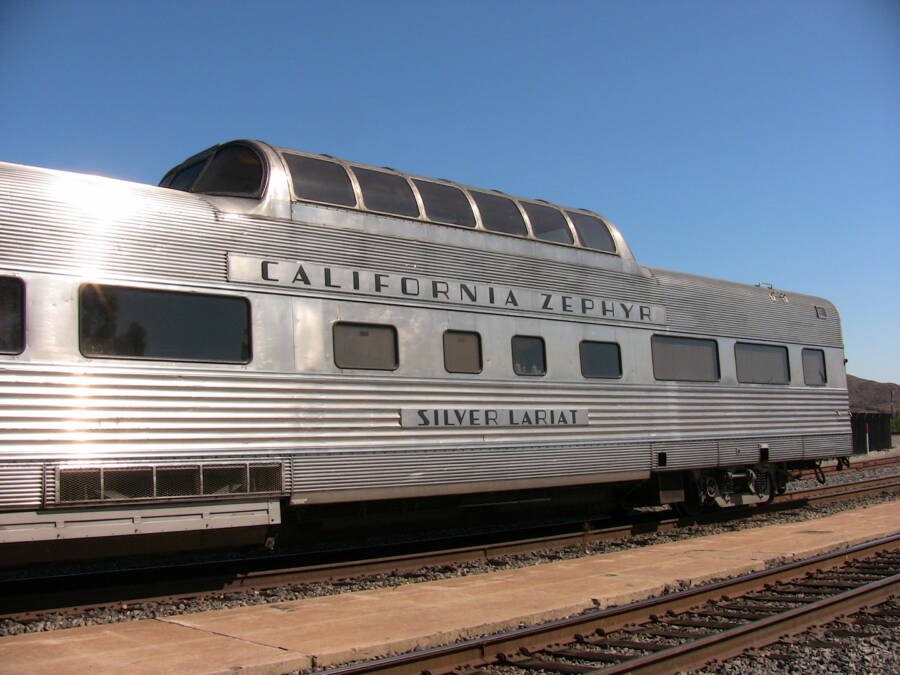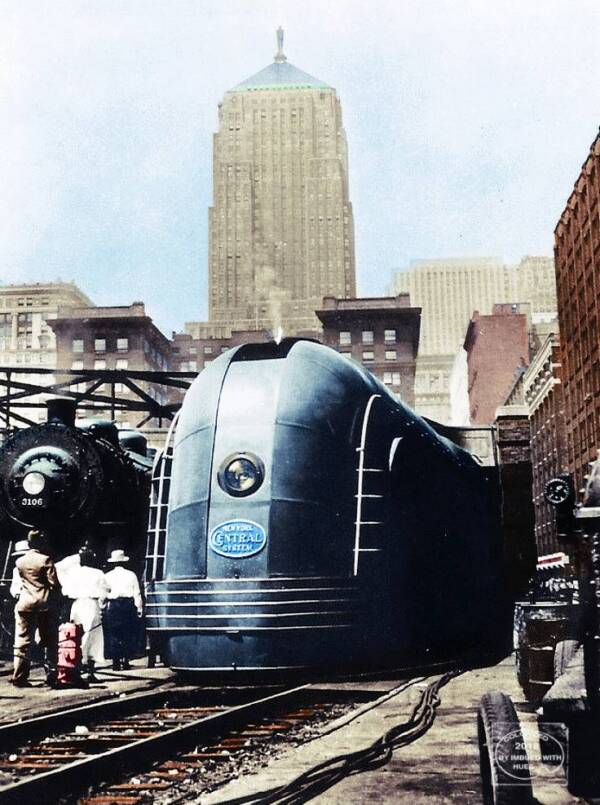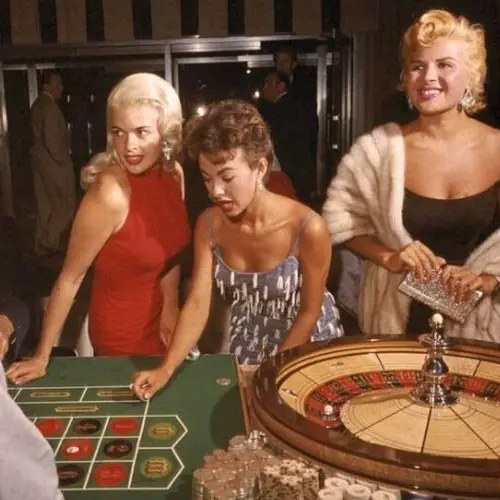In mid-century America, streamliners were luxury train cars that were supposed to herald in the future of transportation, so what happened to them?
From the ashes of the stock market crash of 1929 rose America's next obsession: streamlined, industrial design.
Companies that made it through the economic crisis had to make their mark against the competition in order to stay afloat and often did so by beautifying everyday objects. Railroad companies were no exception, and they entered this aesthetically stunning era with sleek, futuristic streamliner trains.
Streamliners were a class of luxury trains that were built throughout the 1940s and 1950s and designed for long-distance traxel. Touted as the new standard for comfort in North American transportation, streamliners were likened to cruise ships on wheels.
The streamliner was supposed to revolutionize the railroad industry, which had been struggling even before the Great Depression with the rise of the automobile. But despite its modern design, the streamliner failed to travel much further into the future past mid-century.
The Streamliner Represented The Next Generation In Train Travel
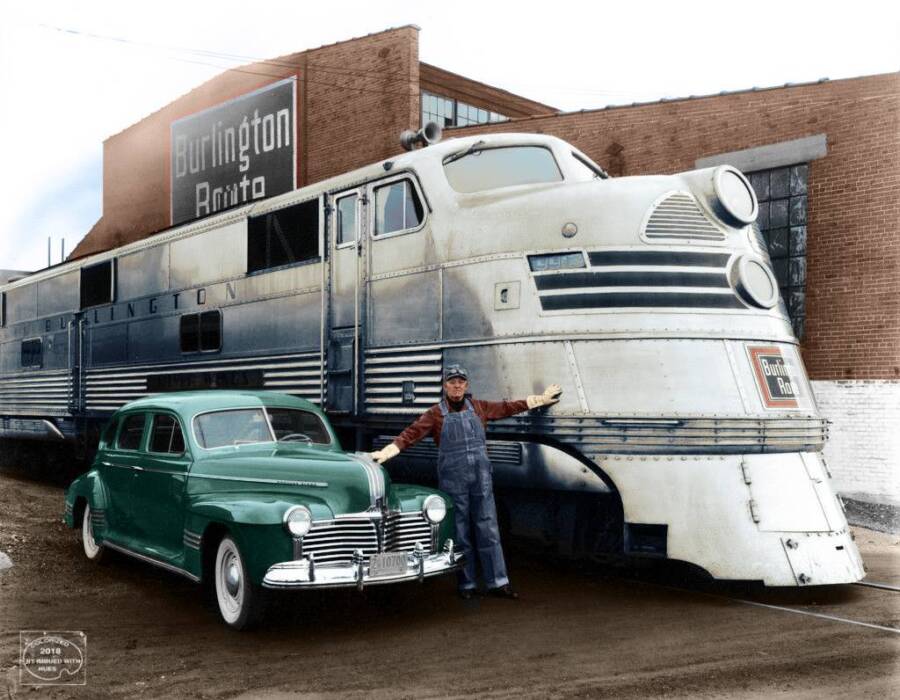
Imbued with Hues/Facebook The Burlington Zephyr, pictured alongside a 1941 Pontiac.
The Great Depression severely stalled the transfer of goods and freight trains became less of a necessity. In a bid to stay in business, the railroad switched gears from cargo shipping to passenger service.
But train travel had not progressed much in the last century, so the railroad companies were pressed to find a faster, more comfortable mode of transport that would catch on, and one solution they hit on was to "streamline" their cars.
Streamlining objects meant replacing boxy shapes with curves and tapers, offering less air resistance and speedier travel. While the same aesthetic choices were made on everything from furnishings to toasters, streamlining trains significantly increased their speed and efficiency.
This choice, as one historian put it, "Stimulated public faith in a future fueled by technological innovation."
Then, in 1932, a pair of Budds (no relation) changed the railroad industry. Ralph Budd was the president of the Chicago, Burlington & Quincy railroad line. Edward Budd was a car manufacturer in Philadelphia. The pair met in 1932 and hatched a plan to reinvent train travel, with Ralph improving speed and efficiency, and Ed the marketing and design.
Two years later, the duo unveiled the Burlington Zephyr diesel train. Named for Zephyrus, the ancient Greek god of the west wind, this beauty featured a corrugated stainless-steel exterior and was debuted on May 26, 1934, to awed audiences.
The Zephyr zipped from Denver to Chicago on its first dawn-to-dusk run, shattering the record for nonstop train travel and speed by arriving 13 hours and 5 minutes later. Until that day, the record time from Denver to Chicago clocked in at over 25 hours.
Interestingly enough, the Union Pacific railroad company had released an original streamliner of its own, the M-10000, just a few months before Zephyr. In fact, the company had released a streamliner back in 1905, but the only person who took the design seriously at the time was none other than Ed Budd.
A Class Of Trains Designed With Unprecedented Luxury
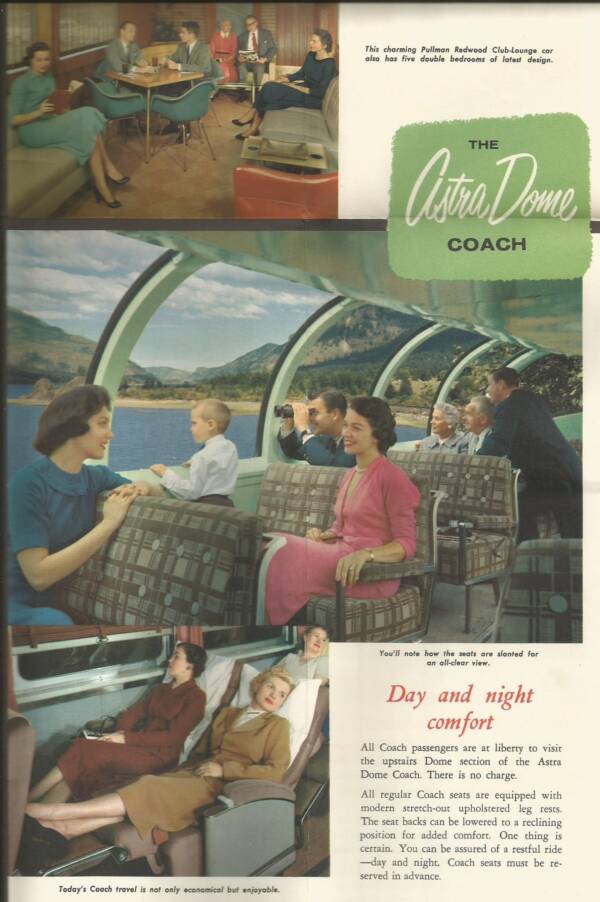
Streamliner MemoriesA Union Pacific Domeliner model, from a city of Portland brochure.
After the release of the sleek new streamliner, Zephyr-mania swept the country. Other products rushed to cash in on the success of the name, including even a broom manufacturer. School sports teams even adopted the moniker and the American musician Hank Williams Sr. even wrote a song about a Zephyr train.
Most notably, other railroad companies scurried to create their own streamliners. Pennsylvania Railroad, Great Northern, New York Central, and countless others produced their own classes of the modern vehicle.
When the Pennsylvania railroad debuted their class of cars in the late 1930s, they coined the phrase "The Fleet of Modernism," and the term encapsulated the overall impact that streamliners had on mid-century travel.
And while stunning on the outside, the inside of the streamliners took luxury to an unprecedented level.
Every train featured cocktail lounges, restaurants, astrodomes, and reclining seats to view the passing countryside. General Motors released a class of streamliners called "Train of Tomorrow," which featured an electric kitchen, telephone services, and a glass penthouse.
With the addition of fashion-forward colors, textures, and luxurious fabrics for the seats and curtains, streamliners became the epitome of mid-century glamour — and ticket prices reflected this to be true.
A pre-tax, first-class, round-trip ticket on the Sante Fe streamliner from Los Angeles to Chicago cost $115 in 1953. That equals over $1,200 a ticket today.
How 'The Fleet Of Modernism' Failed
As with all good things, the era of the streamliner had to end.
The once vital part of American passenger travel suffered greatly with the growth of both the airline industry and the more widespread use of cars. From 1946 to 1965, passenger volume on trains dropped from 790 million to 298 million.
But wistful riders will not forget the impact of the train that was meant to herald in the future.
"Nineteen-sixty-five, my first train ride with my parents," one passenger recalled to PBS. "I was five years old... We children were able to roam the train without fear or reprimand from our parents. We were safe. The dining car with the heavy silver and white table cloth and napkins. Wonderful food."
Another passenger remembered how iconic the design was, "By God, it was something to see: as I recall, a great gleaming emerald line of sleek cars, all those dark shining windows and the golden lettering along the sides of the train to let you know that this was something very special, with a name to match."
After exploring the brief but glorious era of the streamliner train, see how mid-century visionaries thought the future would look. Then, peruse these color photos of the Great Depression.
